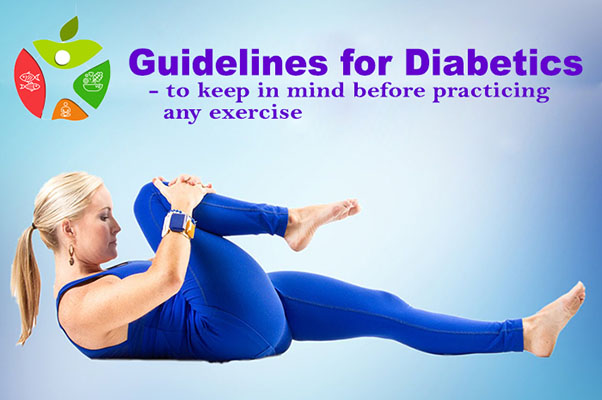Guidelines for Diabetics – to keep in mind before practicing any exercise
Increasing physical activity and reducing sedentary time have shown to benefit in lowering blood glucose levels in pre-diabetics and diabetics. Increasing physical activity along with changes in diet, even for a short duration per day has been proven to be beneficial in increasing metabolic rate, improving digestion and decreasing cholesterol levels. It is best to limit sedentary recreational time to no more than 2 hours per day.
- Monitor your blood glucose levels before starting any exercise. Avoid exercising if blood glucose levels are >300 mg/dl. And also make sure you are well hydrated.
- If blood glucose levels are <100 mg/dl before exercising, have a carbohydrate rich snack like a fruit or any cereal before the exercise is started.
- During exercise, be alert for symptoms of low blood sugar. Make sure you are well hydrated.
- Carry glucose tablets, candy, or any fruit juice in order to treat a low blood sugar episode (only to be taken at the time of hypoglycemia).
- Avoid exercising if you are ill or suffering from any infection.
- Remember hypoglycemia/ low blood sugar can strike several hours after your workout. It is important to monitor your blood glucose levels post exercise.
- Eat a protein and carbohydrate meal such as chapatti and dal, roasted black chickpea (bhuna chana) and puffed rice (murmura), sprouts, egg/paneer wrap or a meal post exercise or workout to make sure that the sugar levels do not drop.
- High intensity exercises which increases blood pressure should be avoided by individuals with retinopathy and nephropathy such as toe touching, weight- lifting, skipping, jogging, boxing, high impact aerobics.
- Low impact exercise such as swimming, walking or stationary biking are recommended.
- The most important for a DM patient is to take care of their feet. So, wear a comfortable footwear before going out in order to avoid injury.
- Non- weight bearing exercise like swimming, cycling, chair exercises, arm and upper body exercises are recommended for individuals with diabetic foot.
- Remember, exercising late in the evening increases your risk for nocturnal hypoglycemia. Best time for exercising is early in the morning or early evening. Check sugars at bedtime and ensure that they are in desired range if you exercise late in the evening.
- Before starting any exercise, one should know that, an appropriate warm-up and cool-down period is necessary to minimize risk of cardiovascular events.
- As per ADA (American Diabetes Association) ECG screening for DM patients to be done before engaging in any vigorous exercise.
- A qualified exercise professional is recommended to supervise.
What is High- Intensity Interval Training – HIIT?
It is alternating periods of vigorous exercise with periods of rest or recovery.
How HIIT helps to improve your health?
Benefits of Regular exercise regime are:
It helps in:
- Better glucose control (to be monitored by continuous glucose checks)
- Cardiorespiratory fitness increases after even a moderate- intensity workout.
- Improved Insulin sensitivity
- Better maintained Blood pressure
- Improved Body composition
- Better Metabolic control
Exercise for better overall health and vitality
Free Consultation with Top : Nutritionist Near Me

